The Gravity Logic Project (GLP) is Lapierre’s most aggressive eMTB. Unsurprisingly, the GLP 3 is the third iteration of the bike since the project launched in 2017, with the aim of making more capable, race-ready eMTBs straight out of the box. To this end, the French brand rely on the Bosch CX Race motor, with 170 mm travel and a mullet wheel set-up. Can it deliver on the trail?
Straight to the new Lapierre GLP 3 Alpine Special Edition
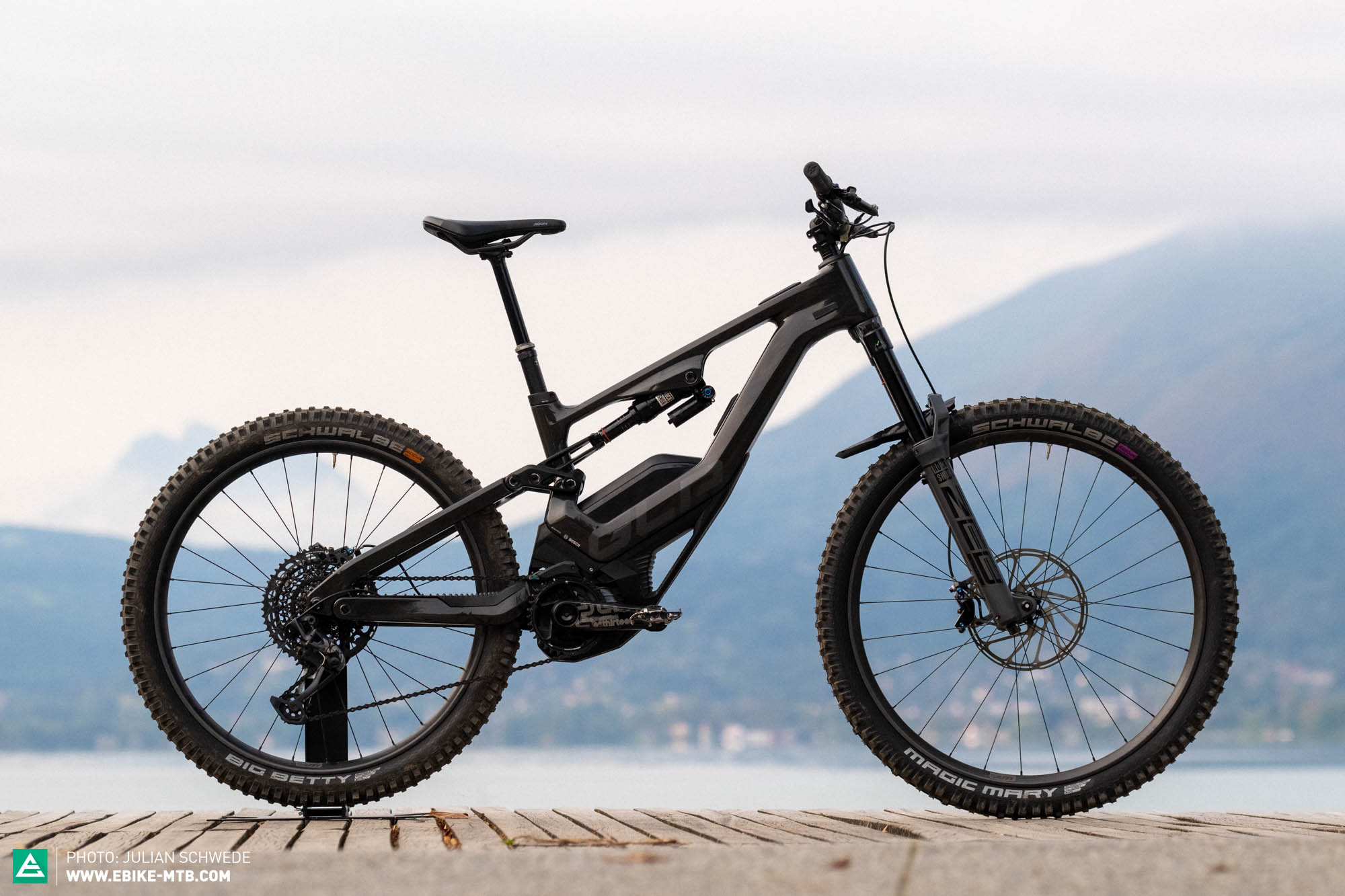
23.4 kg in size M | € 11,499 | Manufacturer’s website
French bike brand Lapierre have been active in the ebike segment since 2015. With the new Lapierre eZesty AM, the brand from Dijon have recently updated their light-assist eMTB. The eZesty was partly responsible for kicking off the light eMTB trend back in 2019 and the latest model continues to rely on a FAZUA motor.
The Lapierre Overvolt GLP, on the other hand, is Lapierre’s spearhead of long travel eMTBs. Now in its third iteration, the GLP platform has an uncompromising form-follows function design philosophy.. GLP stands for Gravity Logic Project and it’s clearly trying to evade the laws of physics. The battery is still fitted externally, though its capacity has grown from 500 to 725 Wh, sitting in the middle of the frame directly above the Bosch Performance Line CX motor (Performance Line CX Race on the two top end models). As such, the 170 mm travel Lapierre GLP 3 clearly focuses on riding performance and optimal weight distribution instead of compromising on a particularly integrated design. The flagship Team model weighs in at 23.4 kg, and can be yours for € 11,499.

The 2023 Lapierre GLP 3 in detail
The frame of the new Lapierre GLP 3 is built asymmetrically around the battery. On the right side, the battery is hidden by a large strut while the left side is kept completely open, making it easy to remove the battery once unlocked. This makes the battery particularly easy and fast to swap out – perfect for those in a race against time.
Due to the central position of the battery between the shock and the motor, there is no space for a bottle cage or a tool mount inside the front triangle. While uncompromising, this is no longer up to date with what racers want. Perfect weight distribution doesn’t matter so much when it feels like you’ve got a mouth full of cotton ;).

Like its predecessors, the GLP sticks with a mullet wheel set-up with a small 27.5″ wheel on the rear paired with a 29er up front. The frame offers 170 mm of rear travel and, thanks to the slightly adapted kinematics, works well with both air and coil shocks. The Bosch Performance Line CX Race motor in the flagship model on test is virtually covered all the way around. The skid plate for the motor is also made of plastic, but unlike its predecessors, it’s no longer a load-bearing component of the frame. It purely serves as protection, and to keep the design consistent.
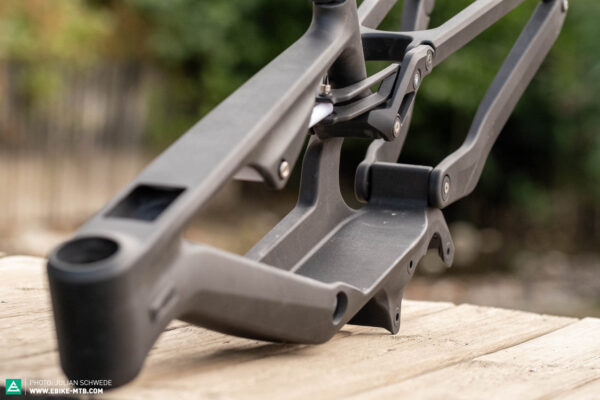
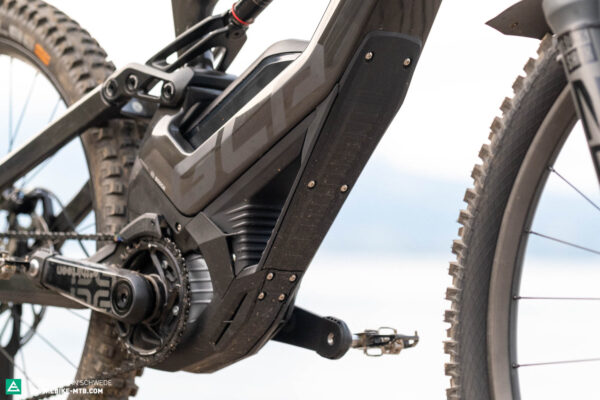
The chainstay protector is soft and securely attached, but it only covers the top of the chainstay. The bottoms of the chainstay and seat stay are left exposed. So, together with the wealth of plastic covers, it’s not just the Bosch motor that you hear rattling on the trail.
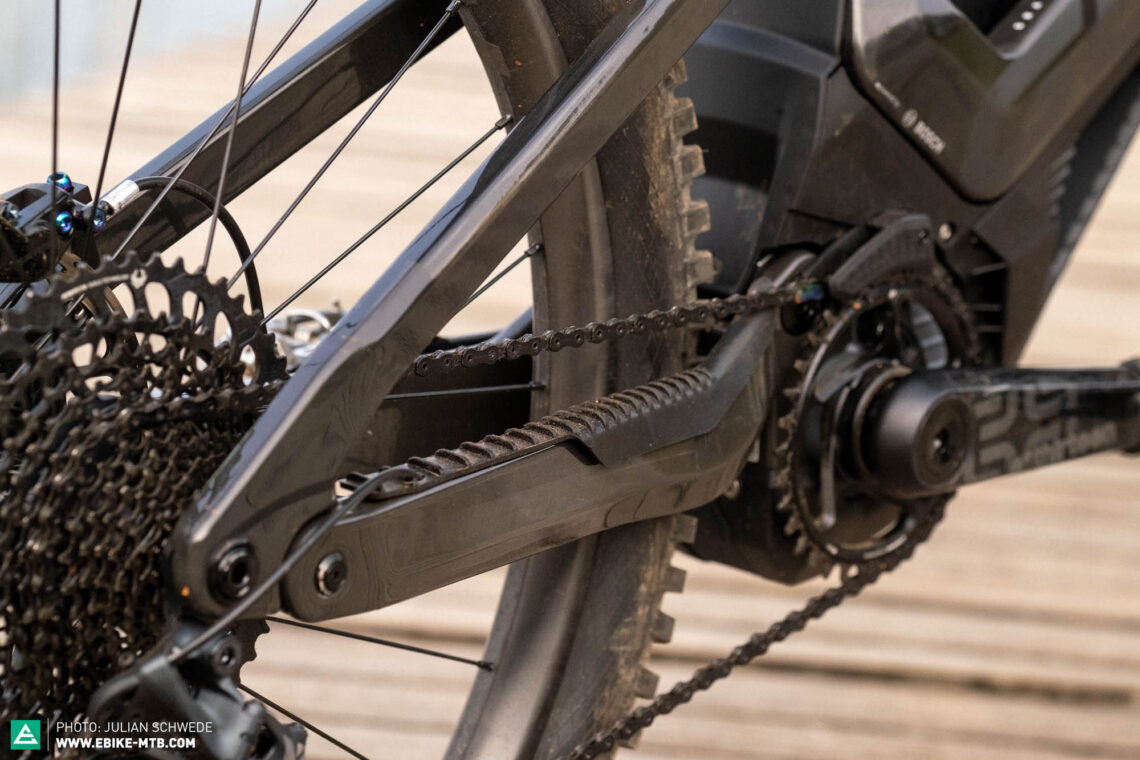
The motor and battery of the 2023 Lapierre GLP 3
The Bosch Performance Line CX Race motor forms the heart of our test bike, offering a maximum torque output of 85 Nm. Bosch decided that such a race-focused motor probably didn’t need an ECO mode, so they lopped it off the bottom, and stuck a new extra-high mode on the top instead – RACE mode opens up even more of the available performance than TURBO. Due to the low position of the motor in the frame and the 725 Wh battery directly above it, the bike has a particularly low centre of gravity, evenly balanced between the front and rear wheel.
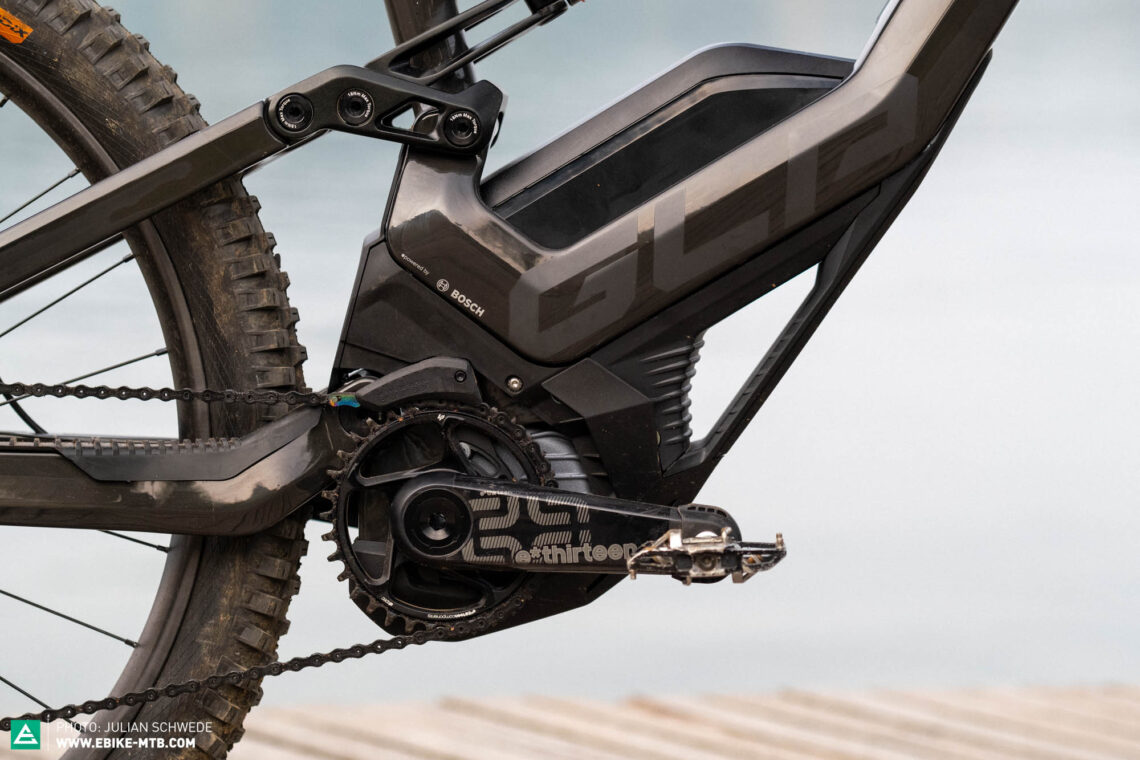
To control that extra power, Lapierre provide you with not just one, but two different displays!. Relying on six different LEDs, the Bosch System Controller on the down tube functions as the Bosch Smart System’s brain, though it merely serves as an on/off switch in this case – you can’t see it while riding. The main purpose of the System Controller on the GLP 3 is that allows Lapierre to dispense with the large LED remote on the handlebar and use the small wireless Bluetooth remote instead. To provide you with the information you need on the trail, Lapierre also integrated a Kiox 300 display into the top tube. Furthermore, the plug and play battery design allows you to use the 550 Wh (2.9 kg) battery instead of the 725 Wh (3.9 kg) version if you don’t want to carry unnecessary ballast on short rides. Doing so cuts the bike’s weight by about 1 kg, and it’s exactly what pro eMTB racers do, track length and topography permitting.

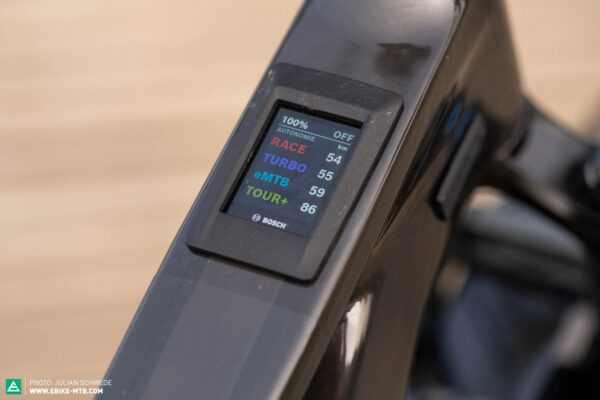
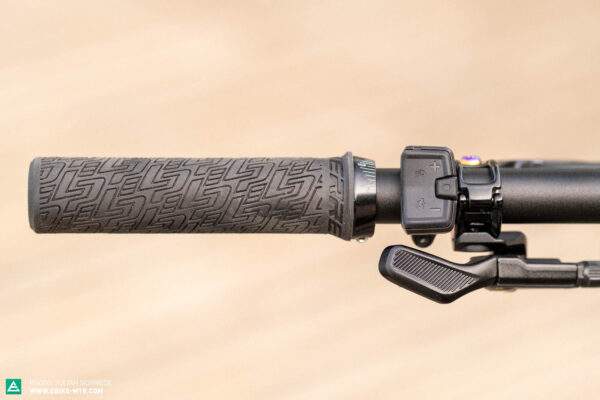
Needing a key to remove the battery isn’t quite as consistently tailored to racing as the rest of the bike. According to Lapierre, however, you can just leave it sticking in the keyhole as it sits in a recess and shouldn’t fall out – we had our doubts, so we didn’t try it out.
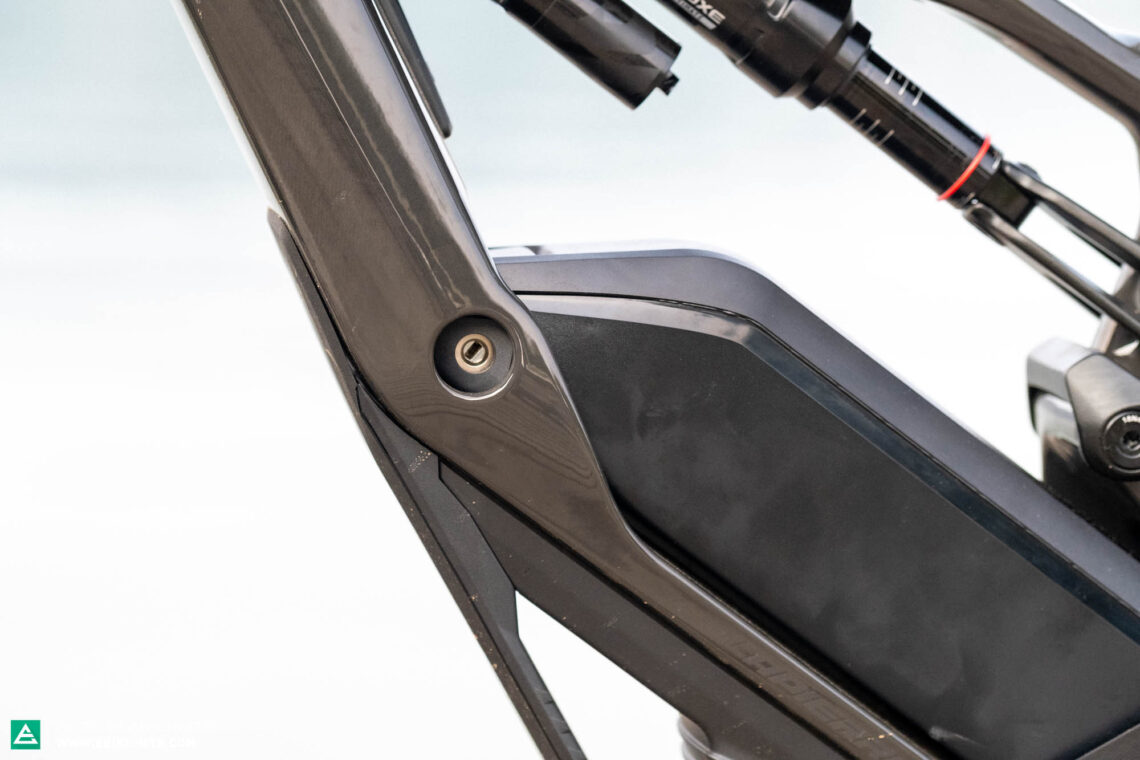
The three different builds of the 2023 Lapierre GLP 3
The Lapierre GLP 3 eMTB comes initially in only two different variants, of which we tested the Team build. This model comes equipped with the Bosch CX Race motor and a 725 Wh battery. The RockShox suspension consists of a ZEB Ultimate fork and a SuperDeluxe Ultimate shock, both of which offer extensive and intuitive adjustability. The SRAM CODE RSC brakes offer plenty of stopping power together with the 220 mm rotor at the front and 200 mm version at the rear. The cable routing isn’t quite as neat as it could’ve been if they had specced the newer Stealth model, which runs the brake hoses close to the bars. The shifting is taken care of mechanically by means of a SRAM X01 derailleur and some occasional loud crunching noises. We would have preferred SRAM’s latest T-Type drivetrain, especially with regard to racing and shifting under load. The JD dropper post is mechanical too, offering 150 mm drop on the size M frame – we’d prefer a longer travel dropper that allows for more freedom of movement. All cables are routed internally, entering the frame via an Acros headset, which allows a steering angle of 150°, sufficient for tight hairpin bends. Overall, the components of the build aren’t entirely up to date, particularly the brakes, mechanical drivetrain and short travel dropper post.
Tipping the scales at 23.4 kg with its carbon wheels, the price for the Team model is € 11,499. Across the board, you get Schwalbe Magic Mary tires in the very soft Ultra Soft rubber compound up front, paired with Schwalbe Big Betty tires with a moderate Soft rubber compound at the rear. Both rely on the SuperTrail casing, which is rather puncture-prone – racers who like to reach the end of each stage on two wheels should upgrade to a more robust casing like Super Gravity.
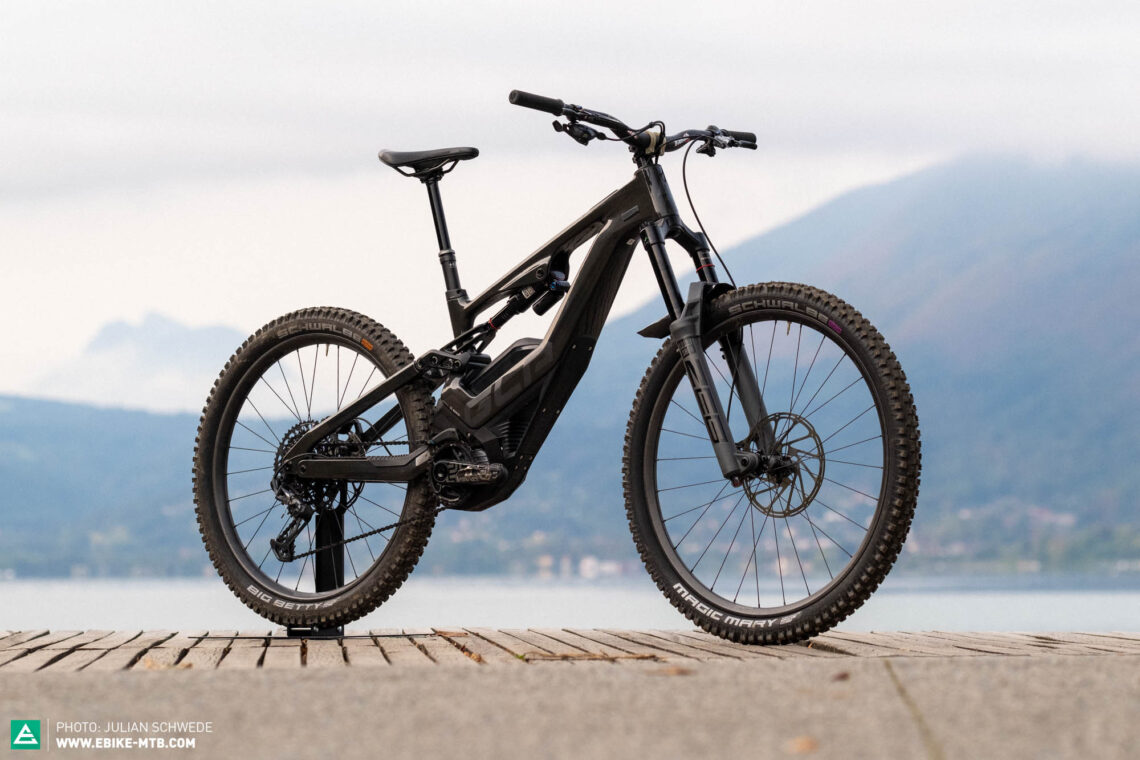
Lapierre eZesty AM 9.4
€ 7,599
Specifications
Motor FAZUA Ride 60 60 Nm
Battery FAZUA Energy 430 Wh
Display FAZUA LED Hub
Fork RockShox Lyrik Select+ 150 mm
Rear Shock RockShox Super Deluxe Select+ 140 mm
Seatpost Lapierre 125 – 170 mm
Brakes Shimano SLX M7120 203/203 mm
Drivetrain ShimanoXT/SLX 1x12
Stem Lapierre Alloy CNC 40 mm
Handlebar Lapierre Alloy 6061 DB 780 mm
Wheelset Lapierre eAM+ Alloy 29"
Tires MAXXIS ASSEGAI 3C MaxxTerra EXO+/ MAXXIS Minion DHR II EXO 2.5"/2.4"
Technical Data
Size S M L XL
Weight 18.3 kg
Trailer approval no
Kickstand mount no
The new Lapierre GLP 3 SE 2023 in the Alpine Spec
The Lapierre GLP 3 SE (Special Edition) model, is a collaboration between Renault Alpine and Lapierre in Alpine blue, also featuring the Bosch CX Race motor and a 725 Wh battery. While the FOX Factory suspension makes a very high-quality impression with the bling Kashima coating. Unfortunately, the fork has to make do with the lower-end FIT4 damper, which results in significant performance losses. The bike comes equipped with a full Shimano XTR groupset and costs € 11,499. It rolls on aluminium Mavic Deemax wheels and tips the scales at 24 kg.
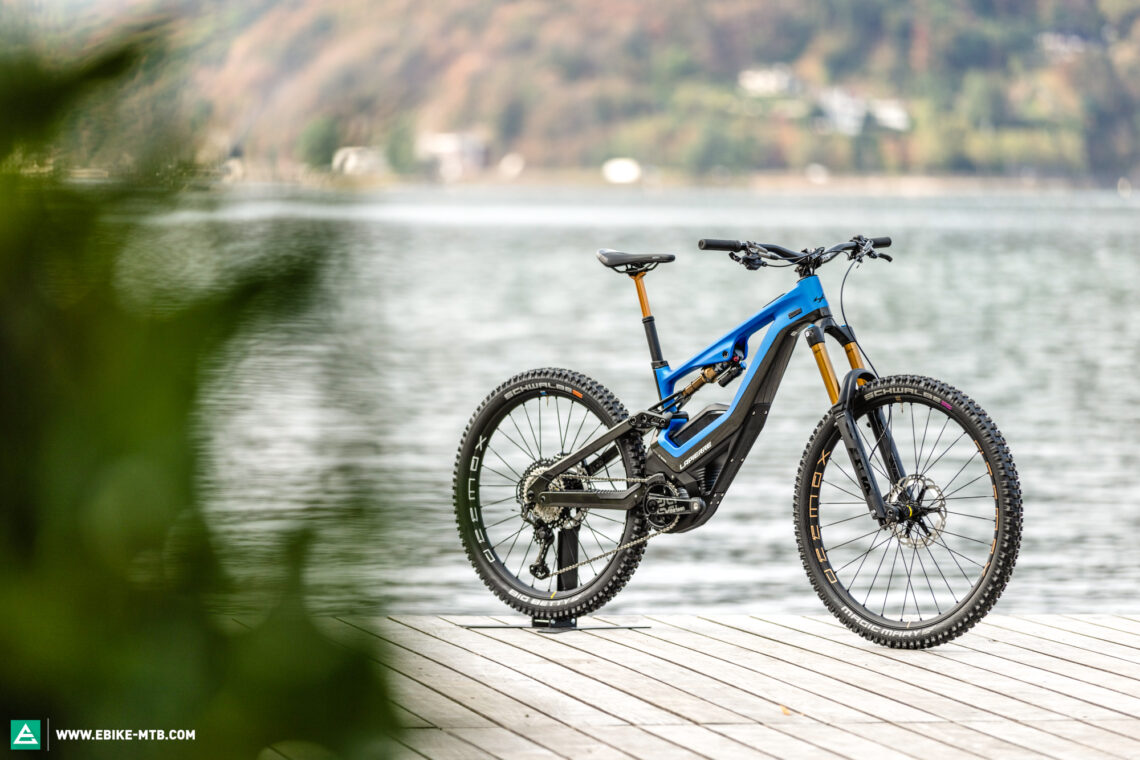
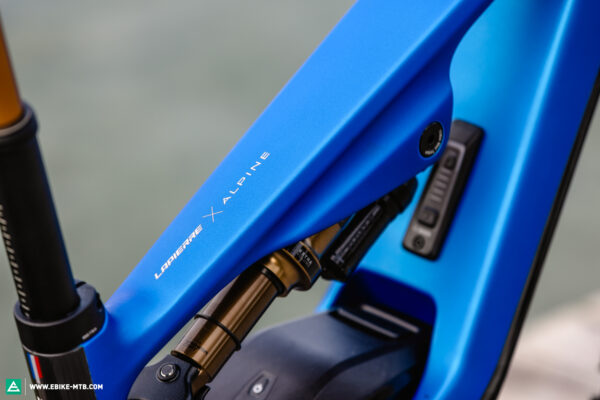
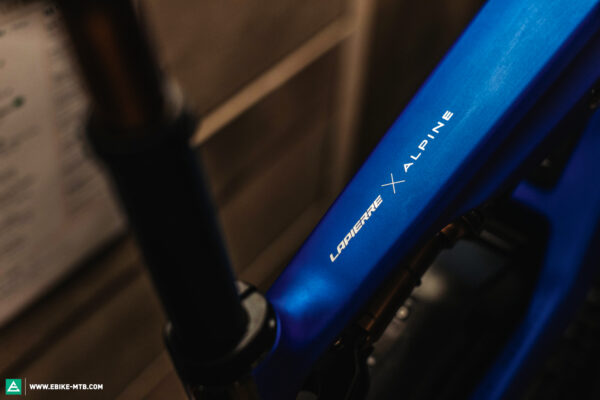
The Elite model is specced with FOX Performance Elite suspension, also relying on the FIT4 damper in the fork, paired with a FOX FLOAT X shock. Shimano XT brakes are there to keep your speed in check. The biggest difference is the Bosch Performance Line CX motor, which offers a slightly less aggressive response. The motor is also combined with a 725 Wh battery, bringing the bike’s total weight to 24.1 kg, sold for € 8,999.
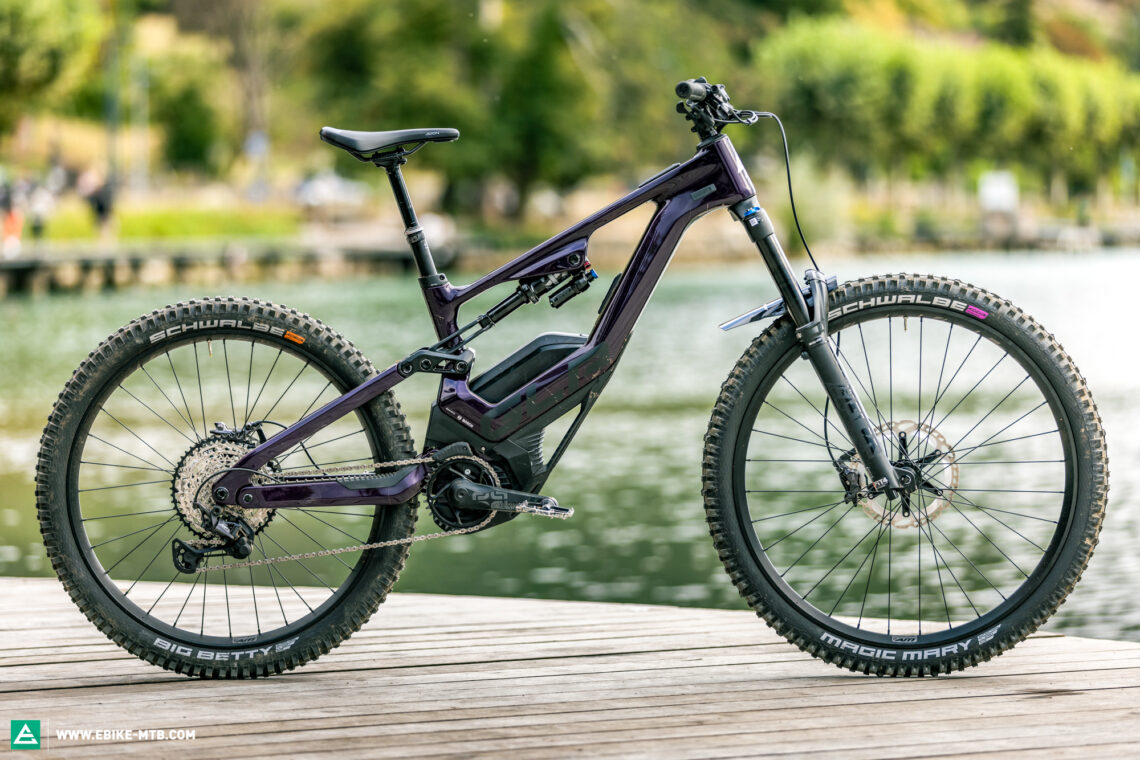
The geometry of the 2023 Lapierre GLP 3
The Lapierre GLP 3 is still designed as a mullet bike, which means it’s got a smaller 27.5″ rear wheel combined with a larger 29″ wheel on the front. Measuring 440 mm, the chainstays are a moderate length, although the small rear tire would allow them to be shorter. In return, you’ve got sufficient clearance for up to 2.8″ wide tires. Compared to the previous model, the GLP 3 has a longer front end, and a one degree steeper 77° seat tube angle. This is combined with a slack 64° head angle. Furthermore, the seat tube length has shrunk by a whole 30 mm in size M, which should give you more freedom of movement.
The kinematics of the GLP 3 are similar to those of the GLP 2, though they have been optimised for air shocks. As such, you should have a smoother response off the top, and more support towards the end of the travel.
The bike is available in sizes S–XL, which should accommodate riders from 1.50 to well over 1.90 m tall.
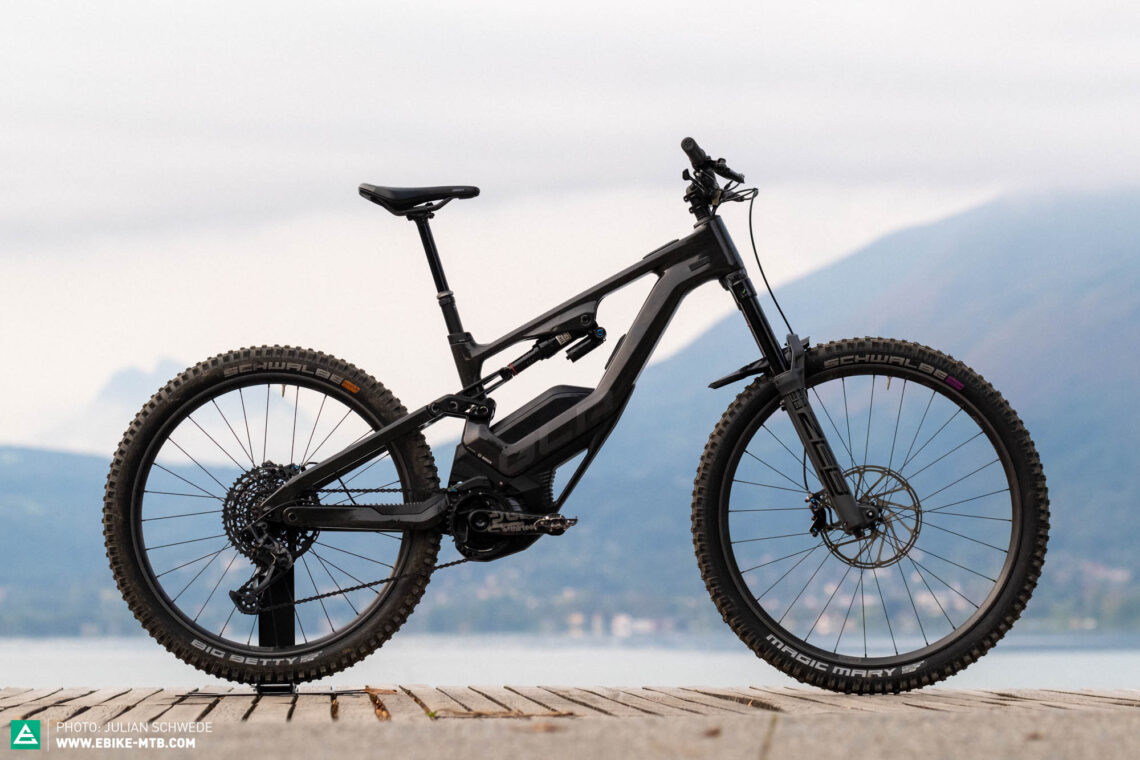
| Size | S | M | L | XL |
|---|---|---|---|---|
| Seat tube | 390 mm | 400 mm | 430 mm | 460 mm |
| Top tube | 580 mm | 607 mm | 629 mm | 656 mm |
| Head tube | 110 mm | 120 mm | 130 mm | 140 mm |
| Head angle | 64° | 64° | 64° | 64° |
| Seat angle | 77° | 77° | 77° | 77° |
| Chainstay | 440 mm | 440 mm | 440 mm | 440 mm |
| BB Drop | 10 mm | 10 mm | 10 mm | 10 mm |
| Wheelbase | 1.225 mm | 1.255 mm | 1.279 mm | 1.308 mm |
| Reach | 435 mm | 460 mm | 480 mm | 505 mm |
| Stack | 629 mm | 638 mm | 647 mm | 656 mm |
The 2023 Lapierre GLP 3 on the trail
Sitting on the bike, there is no major imbalance between the weight on your hands and seat, and the handling feels unusually light-footed for an eMTB as you make your way to the trailhead. The front end doesn’t have that typical heavy and sluggish feeling due to the weight of the battery. Thanks to the balanced weight distribution, the bike is easy to get onto the rear wheel in a manual or wheelie, too.
If you hit steep, technical climbs, the front wheel tends to stay planted nonetheless, retaining grip and control. This is thanks in part to the combination of a small rear wheel, rather long chainstays, and grippy Ultra Soft front tire. The smaller rear wheel does a good job of clawing its way up and over obstacles, and the long rear end prevents you from looping out.
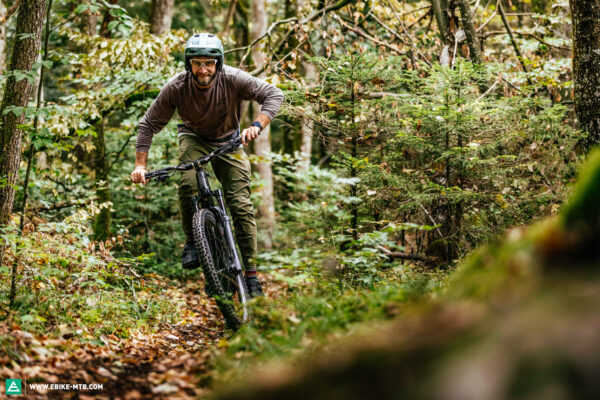

Heading down moderate descents, the bike feels lighter than its 23 kg would suggest. The handling feels lively and agile through fast corners, though that doesn’t come at the cost of composure when things get fast and rough. The bike ploughs through bumpy terrain with ease, which is partly due to the 170 mm travel. The suspension never feels vague, providing plenty of support and feedback from the trail. This allows you to ride with precision while making it easy to catch air and pump the bike through compressions and rollers to generate speed.
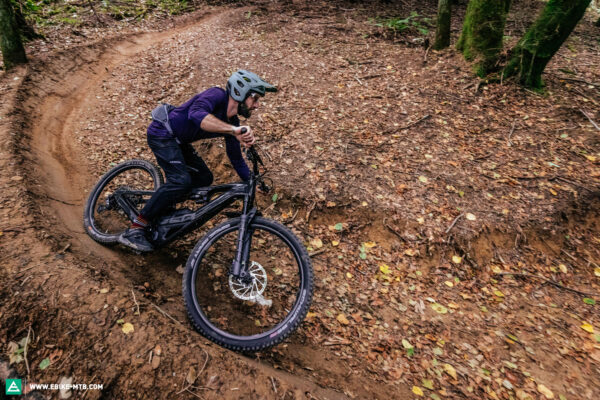
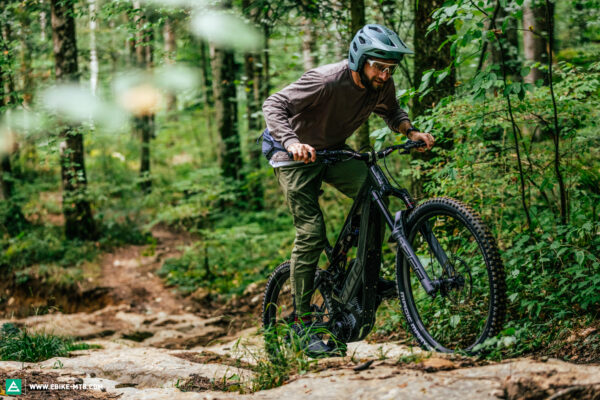
The RockShox ZEB Ultimate fork and Schwalbe Magic Mary Ultra Soft tire are able to generate grip even on damp off-camber roots, always keeping the front wheel in line.
The rear of the Lapierre GLP 3 lags behind the front in terms of playfulness: Scandi flicks or placing the rear end is little harder and requires more input from the rider. In situations like these, there is a noticeable imbalance between the agile front and the somewhat sluggish rear. Moreover, flat terrain and easier trails can feel somewhat boring due to the bike’s long travel and impressive capabilities – it’s the kind of bike that needs higher speeds to come to life and live up to its full potential.
Who is the 2023 Lapierre GLP 3 for?
The Lapierre GLP 3 is an uncompromising bike aimed at competitive riders who value trail performance above all else. The riding position is relatively relaxed, which makes it suitable for long distances, though, unfortunately, it doesn’t have tool mounts or bottle cage bosses, so you’ll need to get used to carrying a pack. Although the Bosch Smart System offers various built-in connectivity features, this wasn’t amongst Bosch’s top priorities when they developed the Performance Line CX Race (!) motor. Those who like fiddling with and fine-tuning the support modes will be happy to know that you can connect to the Bosch app, nonetheless. Overall, the GLP 3 is designed for the kind of riders who can do without convenience features and just want a bike that offers unadulterated trail fun.
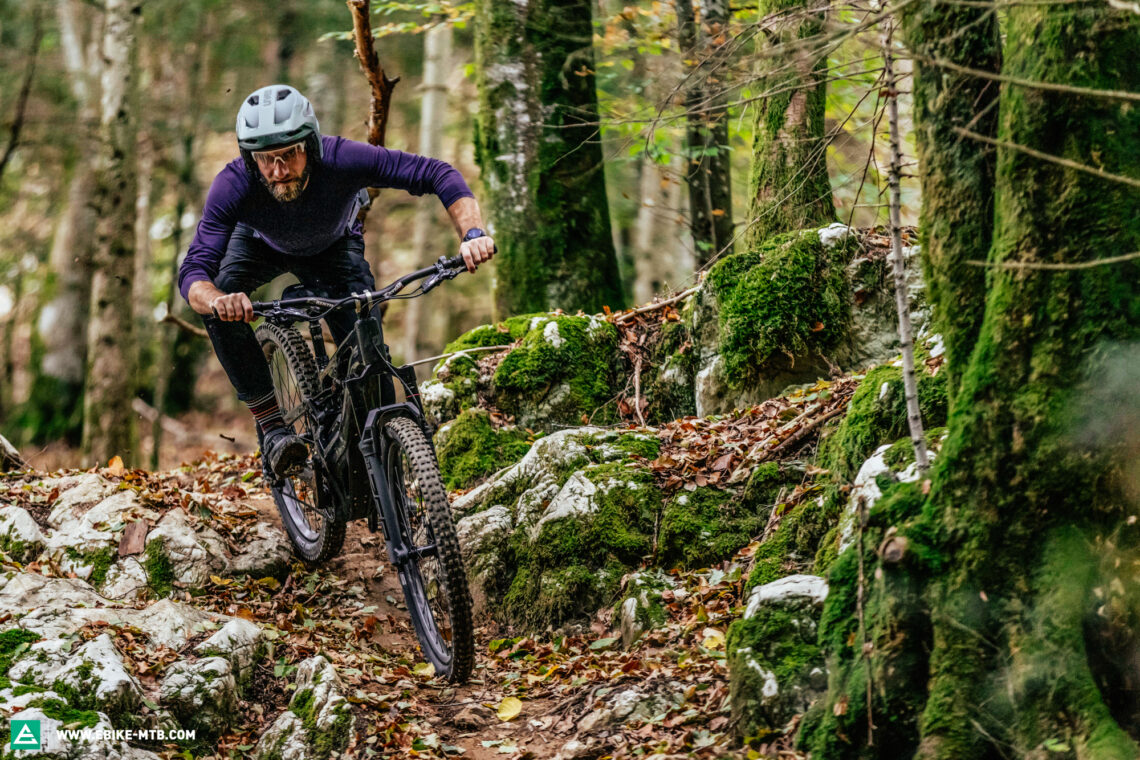
Our conclusion on the 2023 Lapierre GLP 3
The Lapierre GLP 3 is an uncompromising eMTB with excellent suspension and a powerful Bosch Performance Line CX Race motor. The unusual battery position comes at the cost of useful features like bottle cage bosses, but the optimised weight distribution benefits the bike’s handling on rough terrain. Only the € 11,499 price point isn’t quite in line with the mechanical groupset and short-travel dropper post. If you can live with these drawbacks, you’ll be rewarded with excellent performance on the trail.
Tops
- low, balanced centre of gravity
- balanced handling, from agile to composed
- easily removable battery
- modular battery concept, compatible with both 725 and 550 Wh versions
Flops
- no bottle cage or tool mount
- mechanical shifting and dropper post do not do justice to the bike’s potential or price tag
For more information, visit lapierrebikes.com
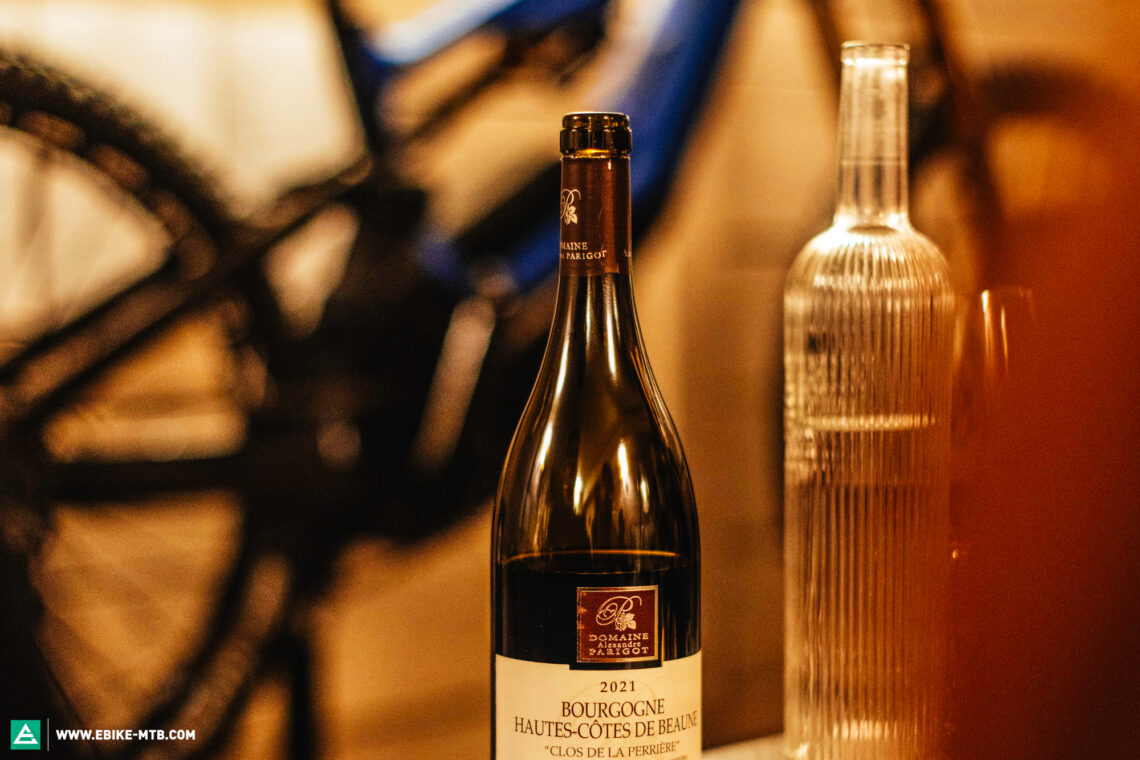
Did you enjoy this article? If so, we would be stoked if you decide to support us with a monthly contribution. By becoming a supporter of E-MOUNTAINBIKE, you will help secure a sustainable future for high-quality cycling journalism. Click here to learn more.
Words: Julian Schwede Photos: Jean-Baptiste Liautard, Julian Schwede









